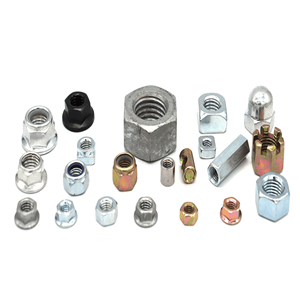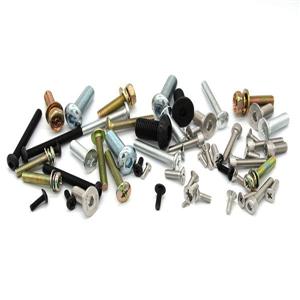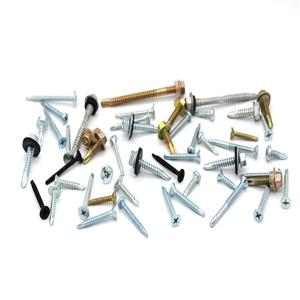Discussion on the use of high-strength fasteners ...
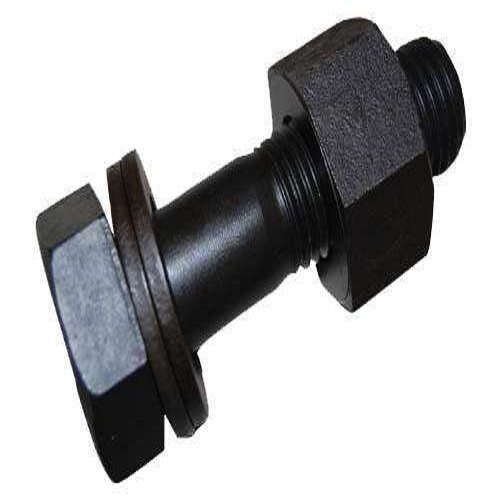
1. Characteristics and applications of high-strength fasteners
1) High-strength fasteners refer to fasteners with relatively high performance levels, including high-strength bolts, high-strength nuts, high-strength washers, high-strength screws, and high-strength studs. High-strength bolts usually refer to the bolts that comply with the performance grade marking system of GB / T 3098.1-2010 "Mechanical properties of fasteners bolts, screws and studs" and have a mechanical performance grade of 8.8; high-strength nuts usually refer to GB / T 3098.2 "2015 leaf fastener mechanical performance nut" performance level marking system and mechanical performance level "is equal to 8 grade nuts; high-strength washer usually refers to high-strength washer for steel structure (GB / T 1230-2006" high-strength for steel structure Washers ") and special washers for high-strength bolts (heavy machinery standard JB / ZQ 4080-2006" Special washers for high-strength bolts "), the former has a hardness of 35HRC -45HRC, and the latter has a tensile strength of 900MPa (<= M90) and 700MPa ( > M100). The performance level of high-strength fasteners reflects the strength of the material. The higher the performance level, the higher the strength of the material and the greater the clamping force that can be generated. High-strength screws, high-strength studs and high-strength bolts have the same execution standards, basically the same characteristics, and basically the same use. For convenience of description, this article only talks about high-strength bolts, high-strength screws and studs.
2) High-strength fasteners have high mechanical strength. Compared with general fasteners mainly referring to bolt mechanical performance level <= 6.8, under the same working conditions, smaller specifications or a smaller number of high-strength fasteners can be used to replace to fully meet the requirements of the working conditions . However, high-strength bolts have more requirements for testing items, such as: section shrinkage, breaking torque, minimum height of undecarburized layer of thread, maximum depth of fully decarburized layer, hardness after tempering, etc., general bolts These items are not detected.
3) Select the performance level of high-strength fasteners that meet the safety factor according to the requirements of the product. The higher the performance level, the better.
4) Different high-strength fasteners are suitable for different products and working conditions. Choose suitable fastener varieties according to the product structure and material, such as: steel fasteners according to GB / T1228-2006 "Steel High-strength large hexagon head bolts for structural use ", GB / T 1229-2006" High-strength large hexagon nuts for steel structure ", GB / T 1230-2006" High-strength washers for steel structure ", consisting of one high-strength bolt and one The high-strength nut and two high-strength washers are used together. For the use of washers, it is generally used when the clamped material has low strength and plastic deformation may occur on the pressure surface.
5) The thread of the high-strength bolt has coarse thread and fine thread. Generally, coarse thread is used. Fine-thread can be used for special occasions or places with high requirements for anti-loosening.
6) High-strength bolts and nuts comply with higher product grades, generally A-grade or B-grade products, and have higher requirements on the shape of the thread bottom.
7) The torque coefficient is the coefficient of all influencing factors that consider the relationship between the tightening torque and pre-tightening force when tightening threaded fasteners. These influencing factors include thread diameter, friction coefficient, thread pitch, tooth shape, etc. For high-strength thread fastening of important parts, the torque coefficient should be considered to ensure that the clamping force is more uniform and the screw stress is more consistent.
2. Selection of high-strength fasteners
1) In the same product or the same component, the variety of high-strength fasteners should be as few as possible, the selection specifications should be relatively concentrated, and it is best to have a consistent layout form, which is conducive to construction operations, reduces costs, and obtains better connection quality .
2) Nuts and washers used in conjunction with high-strength bolts should have a performance level corresponding to the bolts, and select the appropriate nut type according to the high-strength bolt performance level and thread size. If a washer is used, a washer with a hardness greater than the head size of the bolt or nut must be used, and its performance meets the requirements of GB / T 1230 or JB / ZQ 4080.
3) When the high-strength bolt is directly screwed on the body, the internal thread size should be considered according to the body material and the strength of the heat treatment to fully meet the corresponding strength performance requirements of the high-strength bolt.
4) The high-strength fasteners used on the same structural element (such as the flange for fastening a hydraulic valve) should be bolts, nuts and washers of the same performance level, and fasteners of different performance levels are not allowed to be mixed in one place.
5) The through holes of high-strength bolts are generally selected according to the size of medium-sized through holes specified in GB / T 5277 1985 "Fastener Bolts and Screw Through Holes". When the edge of the through hole interferes with the rounded corner of the bolt head, the hole should be chamfered.
6) When the ambient temperature used for high-strength bolts and nuts is too high or too low, the influence of the ambient temperature on the connection of high-strength bolts and nuts should be considered. When the ambient temperature is too high, it shall be implemented according to Appendix A of GB / T3098.1.
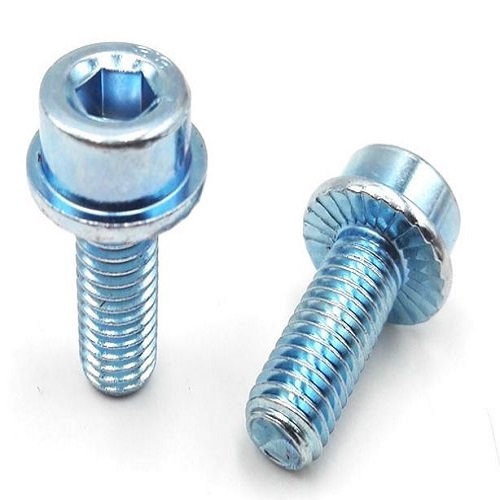
3. Assembly of high-strength fasteners
1) The mechanical performance level of high-strength fasteners used in assembly should be consistent with the performance level specified in the design drawings, and it is not allowed to replace high-strength performance fasteners with low-strength performance fasteners. Check whether the mechanical performance grades marked with high-strength bolts, nuts and washers are consistent with the design requirements.
2) High-strength fasteners used in important occasions and key parts are not recommended for repeated use. If it is not to be reused, it shall be specified in the design document and instruction manual. For general occasions and ordinary components, the country has no uniform regulations on whether high-strength fasteners can be used again, and the practices of various industries and units are also different. If they are reused, they should be specified in the design documents and instructions for use. Only after the necessary inspections can fasteners that meet the requirements be put into secondary use.
General inspection contents include:
1. Appearance inspection: no obvious bumps and squeeze marks, no damage to the thread profile, no bending deformation, no necking, and no cracks on the surface of the bolt.
2. Thread inspection: Check the thread with a thread gauge. Check the pitch error and half angle error of the thread over the entire length of the thread.
3. Magnetic particle inspection: For batches of fasteners, samples of each specification shall be taken in proportion to the number of samples to be inspected. There shall be no cracks in the magnetic particle inspection.
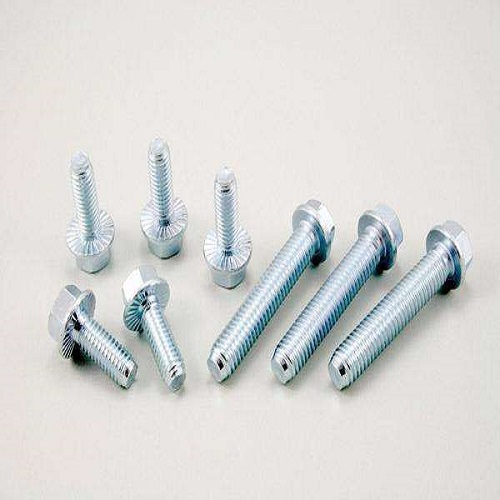
4. Torque coefficient: When the torque coefficient needs to be considered, the torque coefficient is re-measured, and the measured torque coefficient is used for secondary tightening.
3) Check the quality of high-strength bolts, nuts and washers before installation. Good appearance, no dirt, no oil, no bumps; no fastener surface cracks, dents, wrinkles and other defects. If there is such a problem, the nature of the defect should be evaluated according to the corresponding standard, and the unqualified person shall not be put into use.
4) For high-strength washers with a chamfer on one side, the chamfered side of the washer should be placed under the bolt head to avoid interference between the washer and the rounded corner under the bolt head.
5) High-strength fasteners should be tightened according to the specified tightening torque. The high-strength fasteners that provide the torque coefficient with the delivery should maintain their original state, and no cleaning or oiling operations are allowed. Based on the torque coefficient provided, tighten according to the specified tightening torque; Fasteners beyond the warranty period of the torque coefficient should be verified or re-calibrated; for fasteners that do not provide a torque coefficient, the tightening torque should be implemented in accordance with the corresponding standards.
6) When tightening high-strength bolts or nuts, the circularly distributed bolts or nuts adopt a symmetrical and cross tightening sequence. When tightening, the tightening torque should be applied gradually and evenly to avoid sudden force.
7) The tightening of high-strength bolts is divided into initial tightening and final tightening. The initial tightening torque is about 50% of the specified torque, the final tightening torque is the specified tightening torque, and finally, one by one according to the specified tightening torque. For the matching parts required by the tightening method, they should be carried out according to their instruction manuals.
8) Check the quality of the bolt holes and threaded holes. Only when the processing quality is good and no burrs, dirt, deformation, etc. can high-strength bolts be installed. When the wrong hole occurs, take appropriate measures to correct it, and do not force the bolt into it.
9) Use suitable tools (manual or electric, etc.) for tightening. Do not use tapping to tighten. The tightened bolt or nut head shall not be damaged. Fastening tools should be regularly verified in accordance with their usage rules, and their accuracy should be checked before each use.
10) The area where the high-strength bolt heads, nuts and washers are in contact with the connected parts and the surrounding area should keep the metal surface, and the area should be clean and free of dirt. If the area is coated with oil or paint, it should be removed and then assembled.
4 Conclusion
There are actually many factors that affect the assembly performance of high-strength fasteners, such as: the material of the internal and external threads and the hardness of the heat treatment, the quality of the fastening surface, the length of the screw, etc. In addition, for MoS2 coated threads, a more stable torque coefficient can be obtained, and the consistency of the tightening axial force also needs to be tested and studied.
Through continuous in-depth research and discussion on the use of high-strength fasteners, formulating scientific and reasonable specifications, guiding designers in design selection, and ensuring the requirements of manufacturing and assembly are of great significance for improving product quality.


